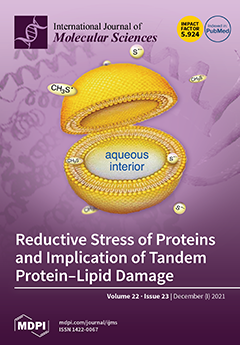Lipocalin 2 (LCN2) mediates key roles in innate immune responses. It has affinity for many lipophilic ligands and binds various siderophores, thereby limiting bacterial growth by iron sequestration. Furthermore, LCN2 protects against obesity and metabolic syndrome by interfering with the composition of gut microbiota. Consequently, complete or hepatocyte-specific ablation of the
Lcn2 gene is associated with higher susceptibility to bacterial infections. In the present study, we comparatively profiled microbiota in fecal samples of wild type and
Lcn2 null mice and show, in contrast to previous reports, that the quantity of DNA in feces of
Lcn2 null mice is significantly lower than that in wild type mice (
p < 0.001). By using the hypervariable V4 region of the 16S rDNA gene and Next-Generation Sequencing methods, we found a statistically significant change in 16 taxonomic units in
Lcn2-/- mice, including eight gender-specific deviations. In particular, members of
Clostridium,
Escherichia,
Helicobacter,
Lactococcus,
Prevotellaceae_UCG-001 and
Staphylococcus appeared to expand in the intestinal tract of knockout mice. Interestingly, the proportion of
Escherichia (200-fold) and
Staphylococcus (10-fold) as well as the abundance of intestinal bacteria encoding the LCN2-sensitive siderphore enterobactin (
entA) was significantly increased in male
Lcn2 null mice (743-fold,
p < 0.001). This was accompanied by significant higher immune cell infiltration in the ileum as demonstrated by increased immunoreactivity against the pan-leukocyte protein CD45, the lymphocyte transcription factor MUM-1/IRF4, and the macrophage antigen CD68/Macrosialin. In addition, we found a higher expression of mucosal mast cell proteases indicating a higher number of those innate immune cells. Finally, the ileum of
Lcn2 null mice displayed a high abundance of segmented filamentous bacteria, which are intimately associated with the mucosal cell layer, provoking epithelial antimicrobial responses and affecting T-helper cell polarization.
Full article






